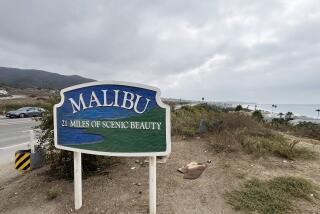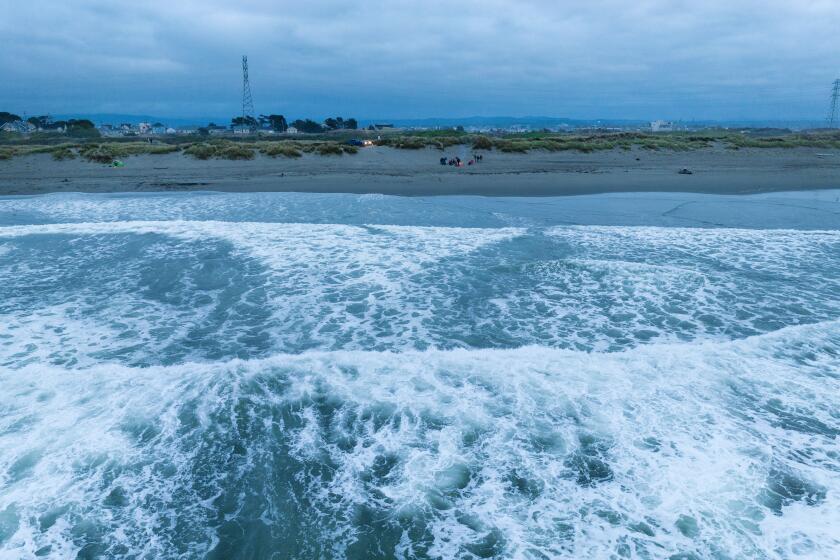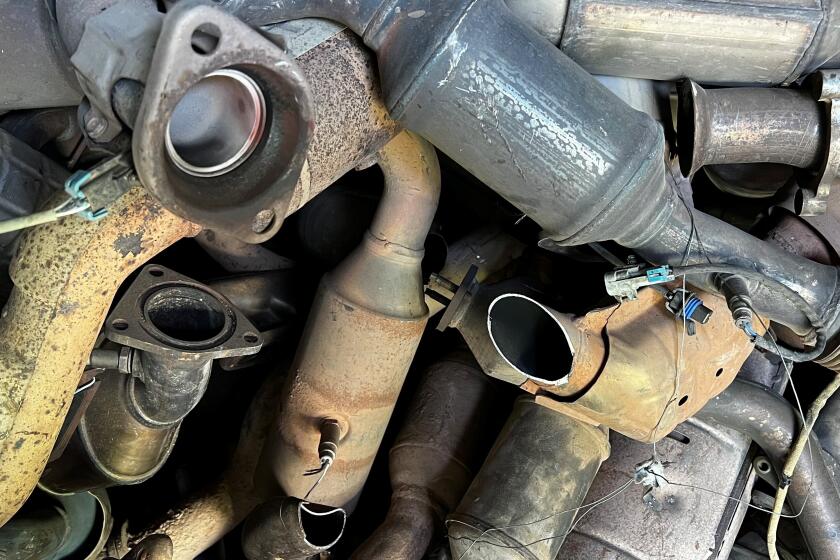TWIN TEMBLORS: THE LANDERS AND BIG BEAR QUAKES : Tuning In by Dawn’s Early Light Helped Calm Rattled Nerves
- Share via
It was not a good morning to sleep in.
When the first of two major earthquakes shattered the peaceful early hours at 4:58 a.m. Sunday, it felt as if Southern California might snap, crackle and pop.
The best place to turn at this ungodly hour was radio, where stations such as KNX, KFWB and KABC were right on top of developments with initial audio reports giving an indication of nature’s big wallop.
But KCBS Channel 2 quickly broke in with the first, dramatic reports by any major local TV station, only minutes after the quake. CNN also moved in fast on the story.
Audio reports dominated all stations during the early hours after the potent shocker in the Yucca Valley-Joshua Tree area of the High Desert. But there was also panoramic telecopter coverage that allayed fears of widespread destruction.
When the second quake struck, however, at 8:04 a.m. near Big Bear Lake, fears definitely intensified as officials suggested that the nightmare might produce yet more significant tremors.
As viewers wondered whether the relative calm that followed might suddenly erupt again later on Sunday or today, the eerie beauty of Southern California--a gorgeous day with the threat of terror--was breathtakingly scary in the vivid, continuing telecopter shots of Los Angeles and surrounding areas.
TV’s normal plastic approach to news was shattered as the story began breaking shortly after 5 a.m. At KCBS, reporter Jodi Baskerville, looking as if she had just rolled out of bed, found herself in the anchor’s seat.
Quickly joining in were Hosea Sanders, assistant news director Michael Horowitz and reporter Harvey Levin, whose often hyper attitude thankfully gave way to sharp questioning and solid reports.
Soon on the air, by about 5:30 a.m., was KNBC Channel 4, which benefited in its early coverage from the calm anchoring of Rick Chambers, who set a good tone for the station.
Before 6 a.m., KABC Channel 7 came aboard and KTLA Channel 5 was also in the mix, really turning it on as Hal Fishman and Stan Chambers brought their long experience on the local scene to the story and reported authoritatively on the affected quake locations.
Fishman, a veteran pilot, was particularly effective after the second quake in spotting the terrain around Big Bear and discussing events with the station’s telecopter reporter as the craft flew over the scene.
The worst part of TV’s coverage came in its attempt to juice reports after the second quake, jumping on the possibility of further disaster to grab viewers. Seismologists may have been giving out the information, but it is always TV’s responsibility to report with a calm, even tone during an unfolding crisis.
Technical problems, meanwhile, hampered KCAL Channel 9 at the start, although it finally managed to get anchors Pat Harvey and David Jackson on the air. KTTV Channel 11 was a relatively minor player, and KCOP Channel 13 was hardly visible.
Except for some footage that finally became available, including the collapse of a wall at a Yucca Valley bowling alley, much of the dramatic material came in the audio reports.
Consumer reporter David Horowitz, whose impromptu anchoring of the 1971 Sylmar quake was one of the most memorable passages in Los Angeles TV history, spoke by phone to his station, KNBC, from a cabin at Idyllwild, not far from the site of the morning’s first temblor.
“This is the worst (quake) I have ever felt,” he said of the magnitude 7.4 shaker.
But what was missing was more detailed footage that not only showed the fires here and there but such geographically pertinent areas as California 62, which leads from Interstate 10 up to Yucca Valley, Joshua Tree and Twentynine Palms.
The audio took precedence. When the second big quake, measured at magnitude 6.5, struck, KTLA’s Eric Spillman reported from already shaken Yucca Valley that “people (are) running out into the streets . . . in fear, in terror.”
Pictures eventually helped flesh out much of the day’s happenings, but the frightening events were epitomized earlier by the shots of shaking newsrooms such as KTLA’s while Fishman and Chambers reported.
At CNN, an anchor said: “People are telling me to get under the desk.” She didn’t. She sat there and waited it out, clearly worried--like the rest of us.
Contributing to the earthquake coverage were Times staff writers Stephanie Chavez, Rich Connell, Aaron Curtiss, Tina Daunt, Ashley Dunn, Janet Rae-Dupree, Len Hall, Scott Harris, Nancy Hill-Holtzman, Richard Holguin, Amy Louise Kazmin, Gebe Martinez, Patrick J. McDonnell, Penelope McMillan, Victor Merina, Josh Meyer, Dean Murphy, Psyche Pascual, George Ramos, Sebastian Rotella, Deborah Schoch, Sheryl Stolberg, William Trombley and Carol Watson. Also contributing were researcher Michael Meyers and Laura Galloway and Michael Faneuff.
More to Read
Sign up for Essential California
The most important California stories and recommendations in your inbox every morning.
You may occasionally receive promotional content from the Los Angeles Times.










